Safari Photography - A First Look into the Fujifilm X-T50
Deep in the heart of the Garden of England, a surprise awaits. Cooling off from the previous weekend’s scorching weather a safari full of animals are living in Port Lympne Reserve. But why were we here as well? Because on the 16th of May Fujifilm launched some huge new products, not least of which, the Fujifilm X-T50.
Pro-features, compact body
Aimed at photographers after fantastic visuals in a neat and tidy package, the X-T50 packs a punch. It's smaller than the X-T5 but inside it houses a lot of the same specs. In fact, this is the same X-Trans CMOS sensor and X-Processor 5 as the X-H2 and the X-T5, so we know that it’s fast and it will capture stunning 40.2 megapixel images.
It is powered by the same battery as the X100VI which when paired with the new processor promises a 20% increase in battery capacity equalling around 390 shots per charge.
Comparing it to the X-T5 there is a lot going for this new camera. As well as the sensor, the X-T50 also has up to 7 stops of stabilisation – the first in its line to have that level of IBIS – and the same video settings as the X-T5.
Fujifilm has kept the size to a minimum by only including one UHS-II card slot, a 2-way rather than 3-way tilting screen, and a Micro HDMI port which is useful for anyone looking at using this camera in a more hyrbid capacity.
In fact the only other difference is that the X-T5 has 15 frames per second in mechanical continuous shooting, over just 8 in the X-T50. Other than that they are virtually identical!
Key Features
- More compact than X-T5
- Lastest generation sensor
- Dedicated film dial for 20 simulations
- Same battery as the x100VI
- New processor makes better battery life
- Single SD card slot for UHS-II
- 2 way tilting screen
- Exactly the same 40.2MP sensor as X-H2, X-T5
- First X-T body to feature 1.4x and 2x digital teleconverter
- Fast and accurate subject detection
- Better AF tracking
- NEW 7.0 stops of IBIS
- Motion blur detection tech is same as in GFX 100 II
- Fantastic video capability
Film Simulation Dial
The obvious external difference found in the X-T50 is the new Film Simulation Dial. From this dial, you have direct access to 12 of Fujifilm’s famous film sims. 9 of these slots are preset to the most popular options including the recently released Reala Ace, first introduced in September 2023 in the GFX 100 II, with 3 additional slots for you to customise and add your favourites. The rest of the simulations are still available from the menu and Q button.

Now if you've not used a Fujifilm camera before, you may be wondering why they have pulled up their filters settings from the menu up onto the body itself. That's because Fujifilm simulations are not like the filters-of-old, like “sepia tone” or “posterise”; Fujifilm’s sims are based on real analogue film and they can genuinely take a lot of the editing out of post if used correctly.
A little side-note for anyone with a previously released camera like the X-T5 or X-H2 - Reala Ace is coming to a camera near you very soon. Fujifilm simply needs to set the date for when this firmware update will be rolled out. But she’s coming, just be patient.
I first wanted to test Reala Ace because it made such an impact on me when I tried it on the GFX 100 II. This is a beautiful colour pallet, with ever so slightly muted tones that instantly take your photo from “ok” to “wow”. It really is that classic Fuji-Look which I think a lot of photographers are after right now.
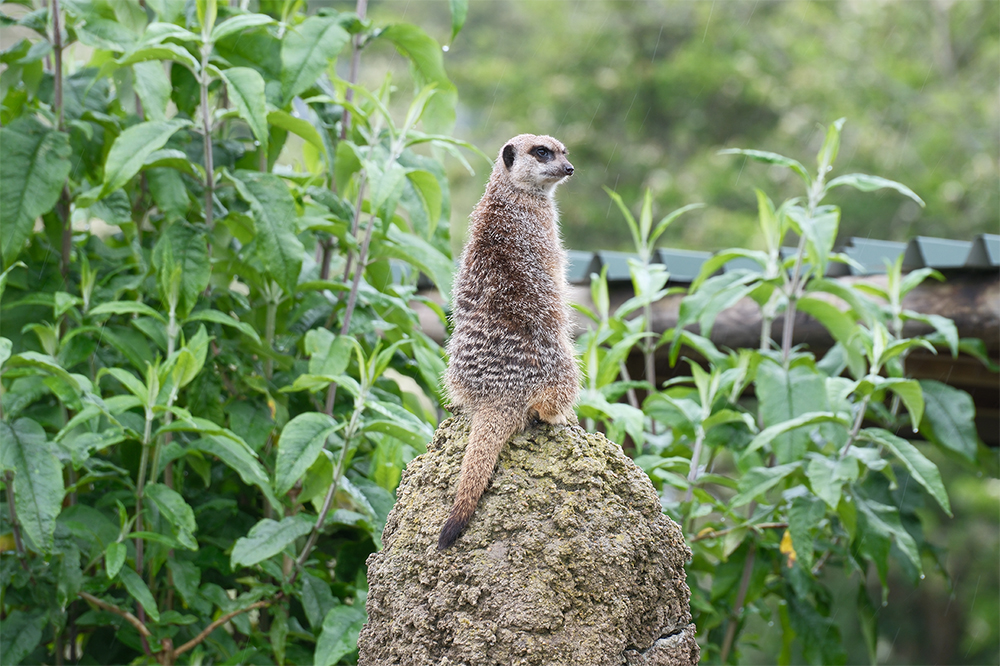
When it came to the Zebras I knew this was the time to pull out the big-guns – Fuji’s black and white ACROS filter. So with the flick of a switch, boom, we’re into the next filter to enjoy the somehow stark yet soft highlights and shadows of ACROS.
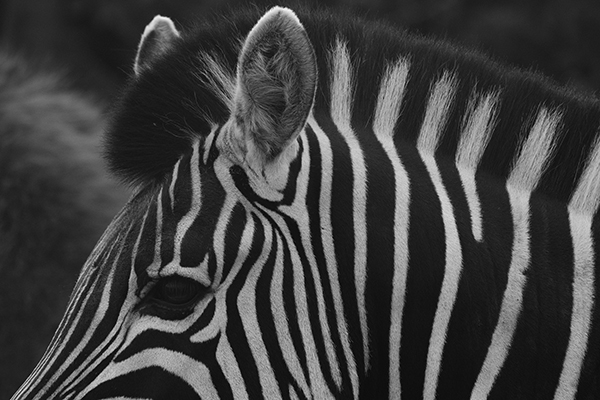
It was definitely fun and exciting to use the dial, it made me experiment a lot more than I have previously with Fujifilm’s sims, and for the most part, I was able to switch without having to leave my viewfinder.
There were occasions, particularly when I was using the XF 150-600mm lens when the placement of the dial coupled with the more compact body made it difficult to switch with the camera up to my face, but overall it was a welcome addition.
Where I think this dial could get a little neglected - and possibly unnecessary - is that when you are taking a photo series there is a desire for colour uniformity. You may be switching between a colour sim and a black-and-white one, but other than that the likelihood is that in most circumstances you would settle on a preset and stick with it - at least until that series of images had been captured.
But for experimentation and overall creativity it's a nice new touch from Fujifilm.
NEW XF 16-50mm f2.8-4.8 R LM WR
Along with the X-T50 Fujifilm has also upgraded their previous kit lens from an 18-55mm to a brand-new XF 16-50mm F2.8-4.8 R LM WR. It’s a catchy name of course, and for the wiser of you out there you don’t need me to explain what all those letters at the end mean. But, just to make sure we’re all on the same page:
R = Aperture Ring - simply letting you know that you can adjust the aperture on-lens rather than in-camera
LM = Linear Motor - which is a highly accurate, speedy, and importantly quiet focus motor
WR = Weather Resistant - I reckon we’ve all got that one sussed
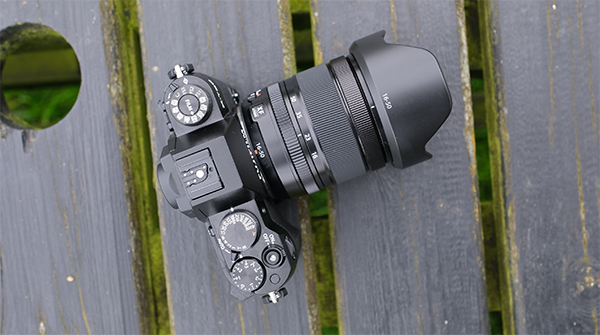
The new focal range on this lens makes a surprising difference. That extra 2mm on the wide end really opens up the field of view and is one of the features that will make this lens great for vlogging and content creation because you will be able to get yourself and a good amount of background in the frame.
Do I wish the lens had a fixed aperture? Yes. But the compensation is a much smaller and lighter lens that overall is going to be much more useful for most photographers and I like what Fuji has done with it.
1.4x & 2x Digital Teleconverter
The X-T50 is the first X-T(?)0 camera to feature a 1.4x and 2x digital teleconverter. This is a fantastic option for when you need your lens to reach just that bit further, and I found myself throughout the day switching between the TC options where necessary.
It is of course worth remembering that when you use a teleconverter your aperture does get affected, so on more gloomy days, you'll have to be more careful when it comes to shutter speed and ISO to ensure you're still getting bright images.
 0x Digital Teleconverter (70mm)
0x Digital Teleconverter (70mm) 1.4x Digital Teleconverter (70mm)
1.4x Digital Teleconverter (70mm)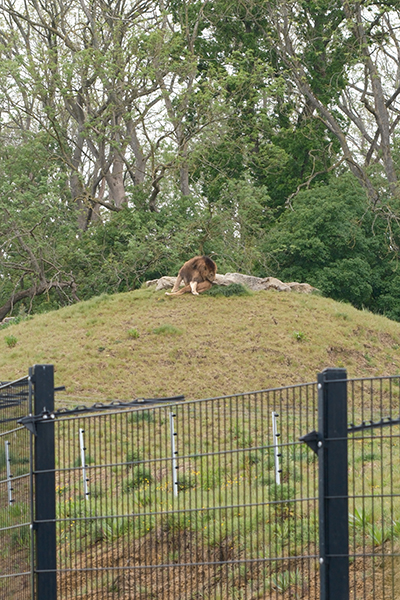 2x Digital Teleconverter (70mm)
2x Digital Teleconverter (70mm)
I think it is elements like this that will really appeal to a wide level of photographers, from entry-level up to enthusiast and pro, because to an extent it does mean that you can take less glass with you. I’ve never actually shot with a teleconverter, digital or not, usually opting to crop in post but not only does this skip out this step, but it also means that you are properly composing the image in the moment, and making full-use (albeit, a slightly cropped full-use) of the sensor and so you are going to end up with larger files to begin your editing process with, which is essential when it comes to printing.
Professional Level Video
There are very few cameras being released these days without impressive video capability and the X-T50, despite being targeted at the photographic market, is no different.
It boasts the ability to record in 6.2K/30P, 4K/60P, 1080/240P and 4:2:2 10-bit as well as F-Log2, Pro-Res and Blackmagic Design RAW. It also features handy video functions like Red Frame, touch subject tracking and video self-timer.
I found the 7 stops of IBIS came into play with the video. I was filming the animals throughout the day as well as photographing, and the footage both through the viewfinder and when looking back on my laptop was really impressive.
Of course, the 2-way rather than 3-way tilting screen does prevent you from using this camera for on-the-go vlogging, but for more traditional videography where you are firmly planted behind the lens, the X-T50 offers a very nice package deal.
An alternative option for the X100VI?
I know a lot of people are waiting patiently for the X100VI right now, but I do think this could offer a strong alternative for those with less patience, depending on what they had planned to use the camera for.
Many photographers have been after the X100VI after the X100V became known for the Fujifilm film sims. If this is the case then the X-T50 might very much be the camera for you. It has the same sensor, processor, obviously the same film simulations, and video capabilities – it even has one extra stop of stabilisation, so as we were just saying, this could offer an improvement. Plus it has the option to switch out your lenses depending on the subject which means that there is more to play with on the X-T50.
If you are after a compact video-centric camera for vlogging and content creation, however, then the 3-way tilting screen and smaller body of the X00VI may still be for you.
Final Thoughts
So – final thoughts? The X-T50 is truly a fantastic camera.
I think think that the film simulation dial can offer a really unique way of shooting. Being able to quickly transition between simulations will open photographers up to making more creative decisions, rather than getting stuck in the same presets.
It also is a fantastic camera for those getting a little more serious about their photography who aren’t yet ready to jump up to the X-T5. It doesn’t compromise on the areas that it counts. It’s fast. It’s sharp. It’s accurate AF. And again, those easy-to-access and experiment-with film sim dials would allow someone who has just caught that creative bug to take the leap and start shooting.
The battery lasted me pretty much all day, only packing in while I walked back up the hill to the meeting point. I was using the camera intensely throughout the day, constantly switching between stills and video mode and not turning it off between many shots for fear of missing a crucial moment. Even so, I would definitely recommend getting yourself a spare if you are buying the X-T50, just as a matter of good photographic practice.
I cannot stress enough how much this “lower-end camera” comes with premium technology. Autofocus detection has moved on so far in the past couple of years, from standard human, dog, or bird, a camera can now recognise a Giraffe’s eye and snap onto it with absolute ease, or a monkeys…. well, we don’t need to go there.
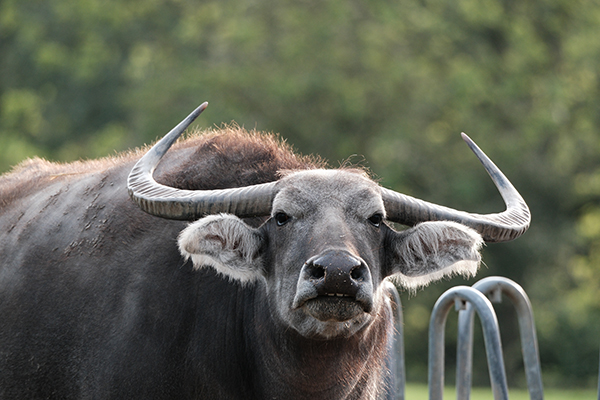
The digital teleconverter had me tele-converted. I was surprised by how much I enjoyed this addition and I think I am going to miss it when I head back to my current camera. It was perfect for the wildlife shots we were getting in the park and I hope to see this added into more cameras in the future.
The pro-level video was also a huge bonus. Making use of the CMOS X-TRANS sensor to capture stunning 4K/60p video (I didn’t delve into the realms of 6K today) the video was consistently crisp and really brought the animals to life. I also found the video function features highly useful, particularly the red frame function because without it I think I would have missed some real moments, like these Biscon playing in the field. It makes me wish Fujifilm had put a 3-way screen on this camera as I may be getting seriously tempted to get my wallet out right about now.
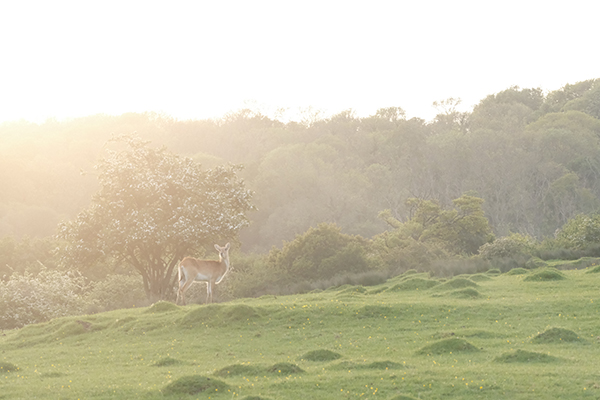
Convinced yet?
So there you have it. I highly recommend that if you are interested in this camera you click the link below to find out more information. The Fujifilm X-T50 is available to buy in black or silver here:
Read Next
- Is the Fujifilm X100VI good for Travel Photography?
- Fujifilm X100VI | The One and Only
- Is the Fujifilm X-S20 just for Vlogging?
Thank you!
Thanks for taking the time to read our blog, we really do hope they help you out and answer some of your questions. If you still have some unanswered, then please feel free to get in touch with our team of experts.
We have a LiveChat option on our website and we can, of course, be contacted via our email, we're also on the end of the phone too! Read more on how to contact us here >
Want to write for us?
If you've got experience with producing content on photo, video and/or optics products or techniques then we would love to hear from you. Contact our blog editor, Bea, with a sample of your work at bea@cliftoncameras.co.uk.
- By Beatrice Debney
- 16 May 2024





























































